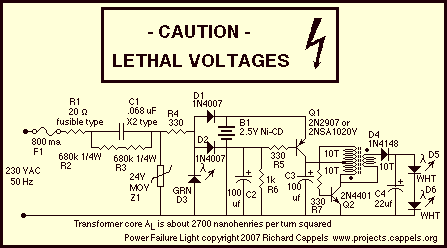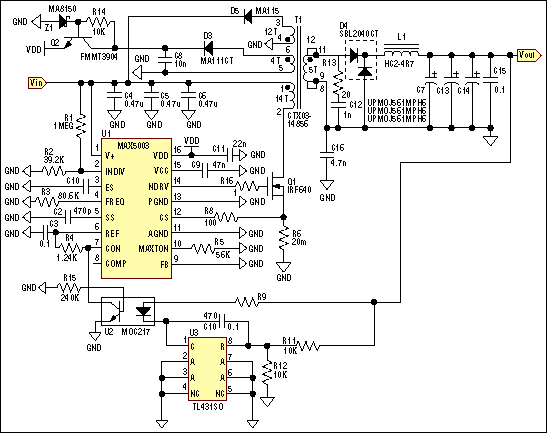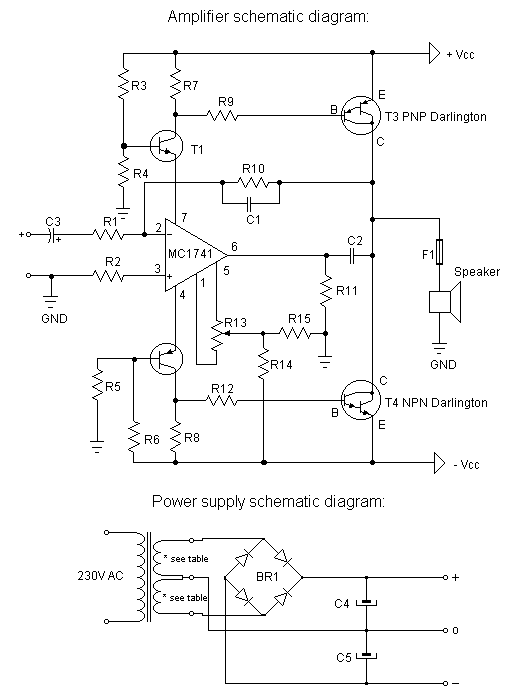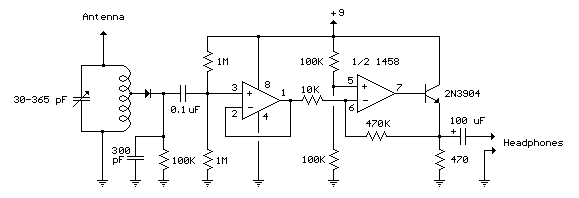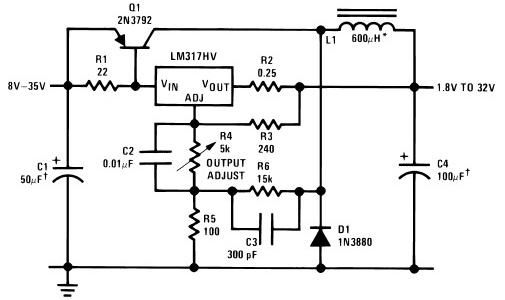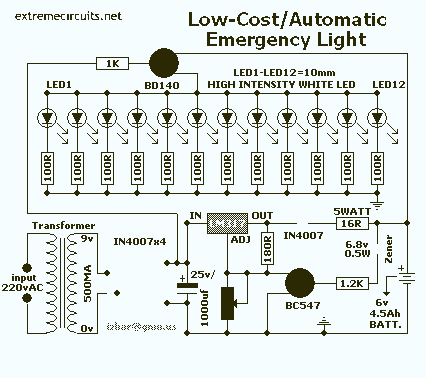
Dual 50V/5A Universal Power Supply

The transformer has two primary windings and six secondary windings; the two 120-VAC primary windings and the 6.3-VAC secondary windings are connected in parallel. Modules A and B are identical; therefore, only the components of Module A are specified. Module C is wired point-to-point on the IC3 heatsink.
The transformer in this circuit is designed to accommodate dual primary inputs, each rated for 120 VAC, which allows for flexibility in power supply configurations. The parallel connection of the two primary windings ensures that the transformer can handle higher current loads while maintaining the same voltage level. This configuration is particularly useful in applications where redundancy or load balancing is desired.
The six secondary windings, rated for 6.3 VAC, are also arranged in parallel. This arrangement provides a combined output that is capable of delivering higher current while maintaining the same voltage level across each secondary winding. The parallel connection of the secondary windings is beneficial for powering devices that require a stable voltage supply with increased current capacity.
Modules A and B are designed to be identical, which simplifies the assembly and maintenance processes. By specifying only the components of Module A, the design documentation reduces redundancy and enhances clarity for technicians and engineers working on the circuit. This modular approach allows for easier troubleshooting and replacement of parts, as both modules share the same specifications and components.
Module C's point-to-point wiring on the IC3 heatsink indicates a design choice aimed at optimizing thermal management. The heatsink serves to dissipate heat generated by the integrated circuit (IC), ensuring that it operates within safe temperature limits. Point-to-point wiring can offer advantages in terms of reduced inductance and capacitance, which may improve the overall performance of the circuit by minimizing signal degradation.
In summary, this transformer circuit is characterized by its dual primary and multiple secondary windings, parallel configurations for increased current capacity, and a modular design that enhances maintainability. The integration of point-to-point wiring on the IC3 heatsink reflects a commitment to efficient thermal management and performance optimization. Tl has two primaries and six secondaries; the two 120-VAC primaries and 6.3-VAC secondaries are i n parallel. Modules A and are identical; hence, only Module A"s parts are called out. Module C is wired point-to-point on the IC3 heatsink. 🔗 External reference
The transformer in this circuit is designed to accommodate dual primary inputs, each rated for 120 VAC, which allows for flexibility in power supply configurations. The parallel connection of the two primary windings ensures that the transformer can handle higher current loads while maintaining the same voltage level. This configuration is particularly useful in applications where redundancy or load balancing is desired.
The six secondary windings, rated for 6.3 VAC, are also arranged in parallel. This arrangement provides a combined output that is capable of delivering higher current while maintaining the same voltage level across each secondary winding. The parallel connection of the secondary windings is beneficial for powering devices that require a stable voltage supply with increased current capacity.
Modules A and B are designed to be identical, which simplifies the assembly and maintenance processes. By specifying only the components of Module A, the design documentation reduces redundancy and enhances clarity for technicians and engineers working on the circuit. This modular approach allows for easier troubleshooting and replacement of parts, as both modules share the same specifications and components.
Module C's point-to-point wiring on the IC3 heatsink indicates a design choice aimed at optimizing thermal management. The heatsink serves to dissipate heat generated by the integrated circuit (IC), ensuring that it operates within safe temperature limits. Point-to-point wiring can offer advantages in terms of reduced inductance and capacitance, which may improve the overall performance of the circuit by minimizing signal degradation.
In summary, this transformer circuit is characterized by its dual primary and multiple secondary windings, parallel configurations for increased current capacity, and a modular design that enhances maintainability. The integration of point-to-point wiring on the IC3 heatsink reflects a commitment to efficient thermal management and performance optimization. Tl has two primaries and six secondaries; the two 120-VAC primaries and 6.3-VAC secondaries are i n parallel. Modules A and are identical; hence, only Module A"s parts are called out. Module C is wired point-to-point on the IC3 heatsink. 🔗 External reference
